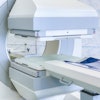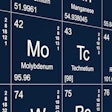ST. LOUIS - With a quarter of a million hip and knee replacements performed annually in the United States, accurate assessment of prosthesis-related infections is more vital than ever. Some investigators see great promise for FDG-PET in this role, while others see a major problem with poor specificity.
A researcher from the Hospital at the University of Pennsylvania in Philadelphia presented the results of a study at the Society of Nuclear Medicine meeting on June 4.
Determining why an infection has taken hold has been a perpetual conundrum for musculoskeletal specialists because a clear picture of the bone-joint fusion wasn't always possible, said presenter Dr. Abass Alavi.
"This is still a problem for orthopedic surgeons. With the number of prostheses (in use) increasing, it's important to have a test for infection that is practical. The hallmark of a positive finding for infection in these cases is the increased activity in the interface between the prosthesis and the bone," Alavi said.
In this study, researchers retrospectively reviewed 109 18F-fluorodeoxyglucose-PET exams used to diagnose infection. Among these, 74 patients were evaluated for pain associated with a hip or knee prosthetic joint, 28 for suspected osteomyelitis and seven for other possible sources of infection, such as an abscess. The 18F-FDG-PET interpretations were compared with patient outcome and final diagnosis.
For detection of all prosthetic infections, the sensitivity came in at 90%, specificity at 89%, and accuracy at 83%. The modality faired slightly better when pinpointing infections of the hip joint, with an accuracy rate of 89%.
Specificity dipped to 72%, and accuracy to 77%, for the diagnosis of prosthetic knee joint infection alone. Alavi said his group could not explain why the specificity of knee joints was relatively low, but planned to do further research.
Researchers from Long Island Jewish Medical Center in New Hyde Park, NY, may already have the answer. In another SNM session, Dr. Charito Love presented the results of a study comparing FDG-PET to the gold standard, leukocyte/marrow scintigraphy, for diagnosing infected joint replacement.
The study prospectively evaluated 18 patients: 10 who had undergone hip replacements and eight with knee replacements. Nine infected joint replacements among these patients were detected by both modalities, giving both 100% sensitivity.
But FDG-PET gave false-positive results in five out of nine uninfected prostheses, for a specificity of 44%, while the leukocyte/marrow scintigraphy had a specificity of 100%, Love said.
In the false-positive FDG-PET exams, the inflammatory reaction was the secondary result of aseptic loosening of the prosthesis rather than infection, Love said. But even after treatment, FDG-PET images still produced false-positive results in those same cases, she added.
Because of its low specificity, FDG-PET may not be a viable replacement for scintigraphy in the diagnosis of joint replacement or for monitoring a patient's response to therapy, Love concluded.
Still, Alavi said orthopedic surgeons at his institution regularly ask for FDG-PET studies because of the modality's ability to clearly show the interface between the bone and the prosthesis. FDG-PET also shows great promise for diagnosing a variety of infectious diseases, from osteomyelitis to sarcodosis, he said.
Previous papers also have supported the use of FDG-PET for delineating infection. Researchers from the University of Michigan in Ann Arbor studied 11 patients with various suspected infections. PET studies were able to find or rule out active infection in all but one patient. Fused PET and CT were particularly adept at displaying FDG uptake in an abscess (Eur J Nucl Med, Sept. 1998, Vol.25:9, pp.1238-1243).
By Shalmali Pal
AuntMinnie.com staff writer
June 5, 2000
Let AuntMinnie.com know what you think about this story.
Copyright © 2000 AuntMinnie.com
















